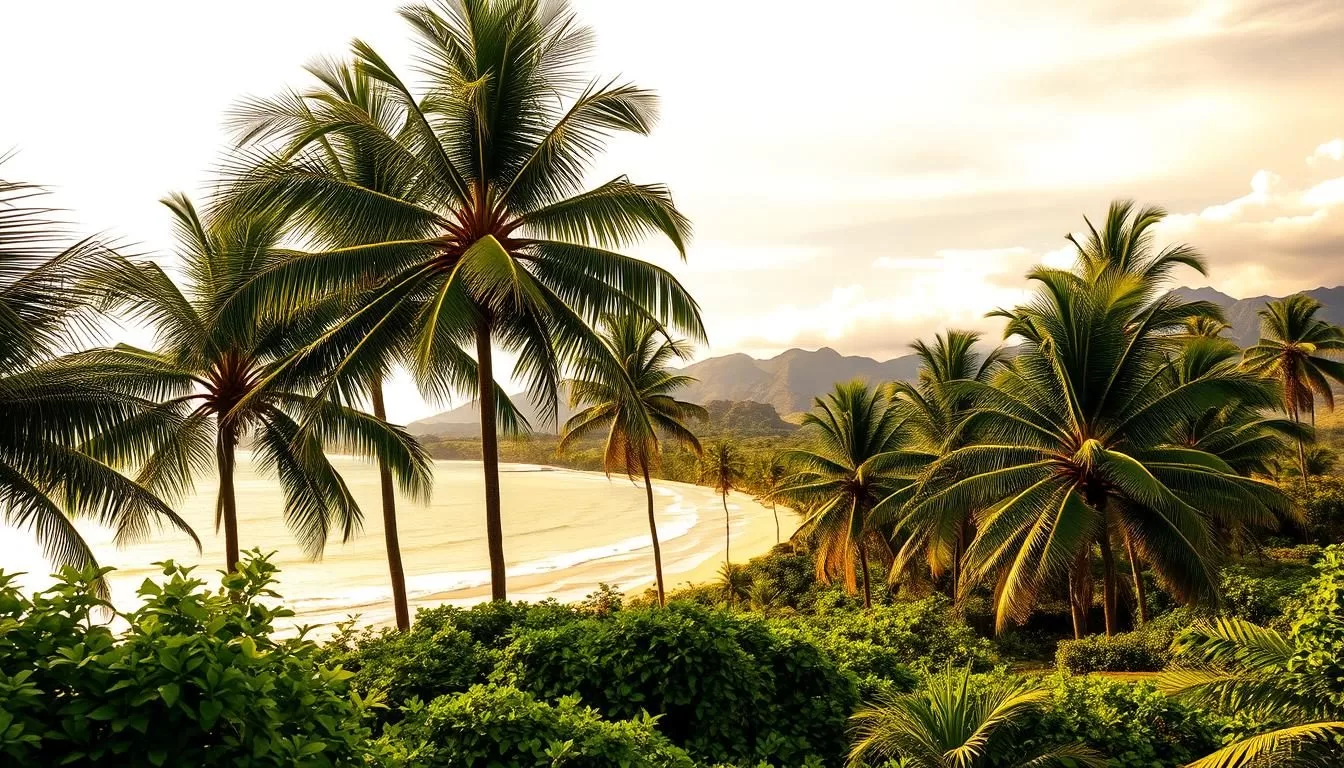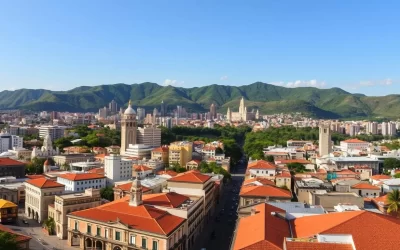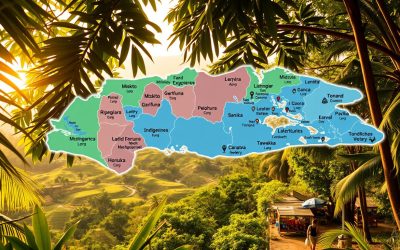Planning a trip to Honduras can be a thrilling experience, but understanding its diverse climate is crucial for a successful journey.
The country’s climate varies significantly, from tropical coastal areas to temperate mountain regions. The Bay Islands boast a subtropical climate, adding to the country’s diverse weather patterns.
Understanding the best time to visit is essential, as the dry and rainy seasons dramatically affect travel experiences. By exploring the different regions and their weather patterns, you can make informed decisions about when to visit.
This guide will help you plan a weather-perfect adventure in Honduras, whether you’re exploring Mayan ruins, hiking in the highlands, or relaxing on the Bay Islands.
Understanding Honduras’ Climate Patterns
Honduras’ diverse geography gives rise to varied climate patterns across the country. The climate varies significantly from one region to another, making it essential to understand these differences when planning a visit.
Tropical vs. Temperate Regions
Honduras features distinct climate zones, ranging from tropical coastal regions to more temperate inland mountain areas. The north coast and Bay Islands experience a hot, humid climate year-round, while the central highlands enjoy more moderate temperatures. This variation is due to the country’s geography, with the temperature varying by region.
Dry and Rainy Seasons Overview
The country’s climate is defined by two main seasons: the dry season from November to April and the rainy season from May to October. During the dry season, you can expect sunny days with minimal precipitation, making it the best time to visit Honduras for most travelers. The rainy season brings afternoon showers and higher humidity, though mornings are often clear and temperatures remain warm throughout the year.
Honduras: Best Months for a Weather-Savvy Trip
The best months to visit Honduras are largely determined by the country’s climate patterns. Understanding these patterns can significantly enhance your travel experience.
November to April: The Dry Season Advantage
During the dry season, from November to April, Honduras experiences minimal rainfall and comfortable temperatures, making it the optimal time to visit. You’ll find that the dry conditions are particularly advantageous for exploring the north coast beaches and inland attractions without weather interruptions.
March and April: The Sweet Spot
March and April are considered the sweet spot for Honduras travel, offering consistently dry days with warm temperatures and lower humidity across all regions. The Bay Islands, in particular, boast crystal-clear waters perfect for diving and snorkeling during these months, with visibility at its peak.
| Month | Weather Conditions | Ideal Activities |
|---|---|---|
| November | Transition to dry season | Exploring inland attractions |
| March | Consistently dry | Diving, snorkeling |
| April | Warm and dry | Beach activities, cultural events |
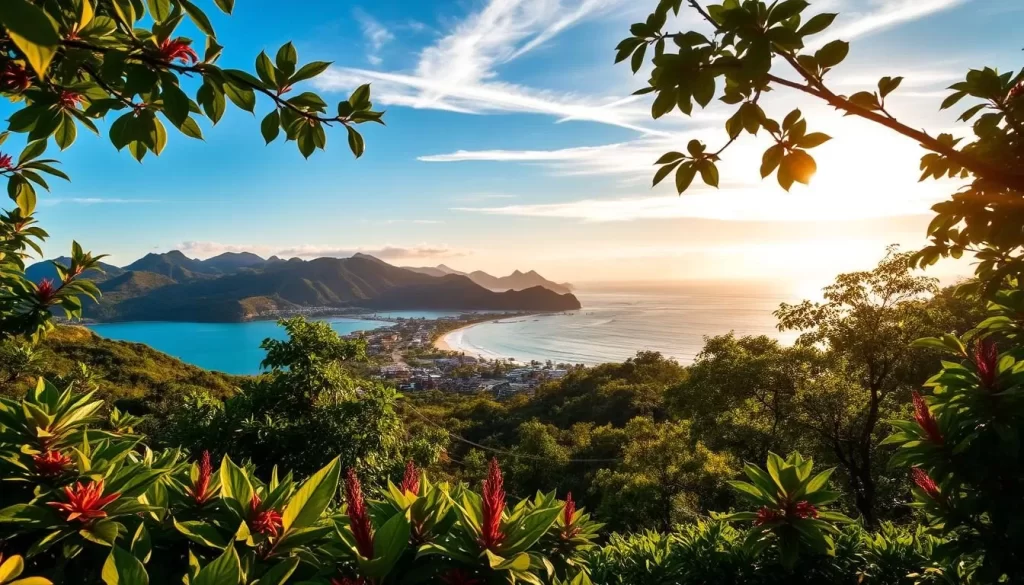
Visiting Honduras during the dry season, particularly between March and April, ensures a more predictable and enjoyable trip. With warm temperatures and lower humidity, you can make the most of your travel plans without the disruptions caused by rain.
Regional Weather Guide: Northern Coast & Bay Islands
The northern coast and Bay Islands of Honduras boast a unique climate that sets them apart from the rest of the country. This region is characterized by high humidity and a distinct rainy season timeline.
Roatán and Caribbean Islands Climate
Roatán, Utila, and the other Caribbean islands enjoy a subtropical climate with warm temperatures year-round, ranging from 27°C to 31°C (80°F to 88°F). The best time to visit the Bay Islands is between January and September, with April to August offering the driest conditions and optimal diving visibility.

La Ceiba and North Coast Weather Patterns
La Ceiba and the north coast mainland areas follow similar patterns but can experience more rainfall than the islands, particularly from September through January. June is typically the warmest month in this region, while January offers slightly cooler temperatures that many travelers find more comfortable.
The northern region’s equatorial and monsoon climate means that even during the “dry” months, brief afternoon showers are possible, though they rarely interfere with travel plans. For beach activities and water sports along the north coast, the period from February to May provides the most reliable weather conditions with minimal rainfall.
When to Visit Central and Southern Honduras
When planning a trip to Central and Southern Honduras, understanding the regional climate is crucial for a memorable experience. The climate varies significantly across different regions, making it essential to plan your visit accordingly.
Tegucigalpa and Highland Areas
Tegucigalpa, the capital, and surrounding highland areas have a more temperate climate due to their higher elevation. The best time to visit is from January to April, when dry season conditions prevail, offering clear skies and comfortable temperatures with low humidity.
Southern Pacific Coast Climate
The southern Pacific coast has a different climate pattern compared to the Bay Islands. The driest period here is from November to April, making these months ideal for visiting. If you’re planning to explore both the central highlands and the coast, February to April provides the most consistent weather.
| Region | Best Time to Visit | Weather Characteristics |
|---|---|---|
| Tegucigalpa and Highland Areas | January to April | Dry, clear skies, comfortable temperatures |
| Southern Pacific Coast | November to April | Dry, less vegetation, easier travel |
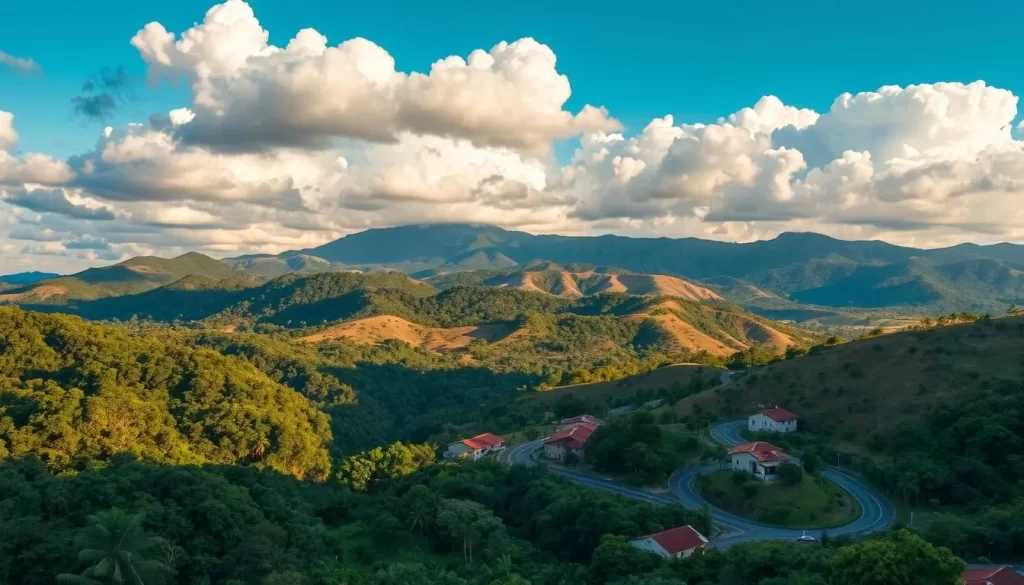
Exploring Western Honduras: Copán and Beyond
Western Honduras is home to the Copán Ruins, an archaeological site that showcases the region’s rich Mayan heritage. Every trip to Honduras must include this UNESCO World Heritage Site. The best time to visit this area is from February to April, when temperatures are pleasant, ranging between 17°C and 30°C, and rainfall is minimal.
Best Months for Mayan Ruins Exploration
The optimal months for exploring the Mayan ruins and archaeological destinations in western Honduras are February through April. During this season, rainfall is minimal, and temperatures are comfortable.
Weather Considerations for Western Highlands
The western highlands experience a gradual decrease in rainfall from October through January, making this a decent alternative time to visit if you can’t travel during the peak dry season. However, the period from May to September brings heavy rain, making it less ideal for exploration.
Hurricane Season: What You Need to Know
Understanding hurricane season is vital for a safe trip to Honduras. The country’s geographical location in the Caribbean makes it susceptible to hurricanes and tropical storms, particularly during certain months of the year.
June to November Precautions
When traveling to Honduras during hurricane season, which spans from June to November, it’s essential to take necessary precautions. The north coast and Bay Islands are particularly vulnerable to the effects of hurricanes and tropical storms. You should consider purchasing travel insurance with weather coverage and remain flexible with your travel plans.
High-Risk Months: August to October
The months of August to October are considered high-risk for severe weather in Honduras. Historically, September has seen some of the most destructive storms. Staying informed about weather forecasts and having access to emergency information is crucial during this time.

Packing Tips for Honduras’ Variable Climate
Honduras’ varied climate requires thoughtful packing to ensure a comfortable and enjoyable trip. The country’s diverse regions, from the Bay Islands to the highlands, experience different weather conditions, making it essential to pack accordingly.
Essential Items Year-Round
Regardless of when you visit Honduras, certain items should always be in your luggage. Lightweight, breathable clothing made from natural fibers like cotton or linen is a must due to the consistently warm temperatures and varying humidity levels. Don’t forget to pack sun protection, including high-SPF sunscreen, sunglasses, and a wide-brimmed hat, as UV exposure is significant even on cloudy days.
Seasonal Packing Considerations
During the rainy season or when visiting regions prone to hurricanes, it’s crucial to include waterproof items in your packing list. A compact umbrella, quick-dry clothing, and a lightweight waterproof jacket or poncho can be lifesavers. For trips to multiple regions, layering is key; for instance, the Bay Islands might require only beachwear, while a trip to the highlands necessitates warmer layers.
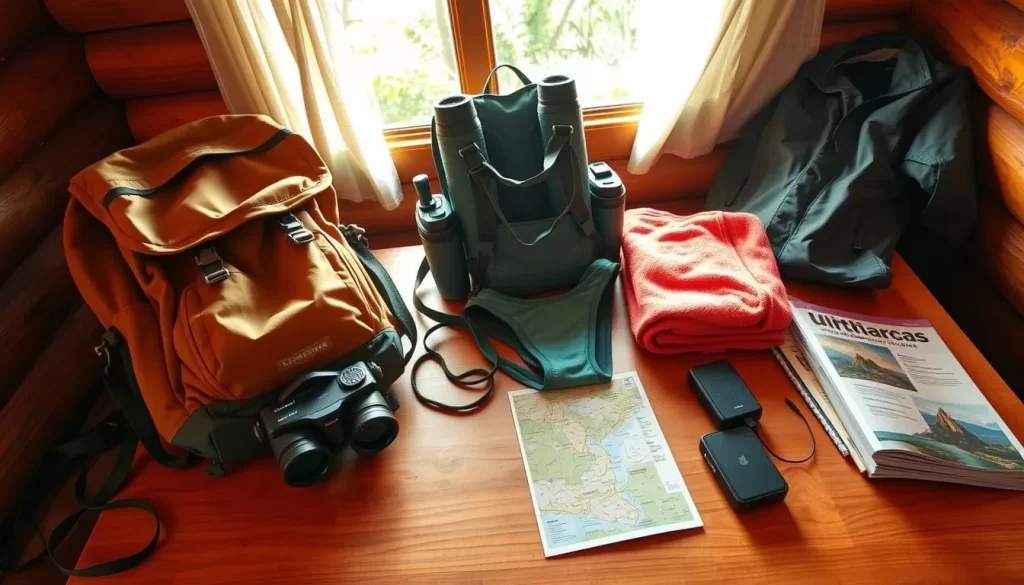
When it comes to footwear, consider the activities you plan to do and the regions you’ll visit. Comfortable walking shoes are a must for urban areas, while waterproof hiking boots are necessary for exploring natural areas during the rainy season. Sandals are perfect for beach destinations. Lastly, don’t forget insect repellent, which becomes even more crucial during the rainy season due to increased mosquito activity.
Conclusion: Planning Your Weather-Perfect Honduras Adventure
With its varied climate zones, Honduras offers a wealth of travel opportunities, but timing is everything. The best time to visit Honduras depends on your interests and the regions you plan to explore. For most travelers, the dry season from November to April is ideal, with March and April being the optimal months for a multi-regional visit.
Understanding the regional climate and temperatures along the coast and in the Bay Islands will help you plan your trip. You can enjoy your destination any time of the year by adjusting your itinerary accordingly.
The above is subject to change.
Check back often to TRAVEL.COM for the latest travel tips and deals.
Here are some Tours & Sightseeing suggestions that might pique your interests!
